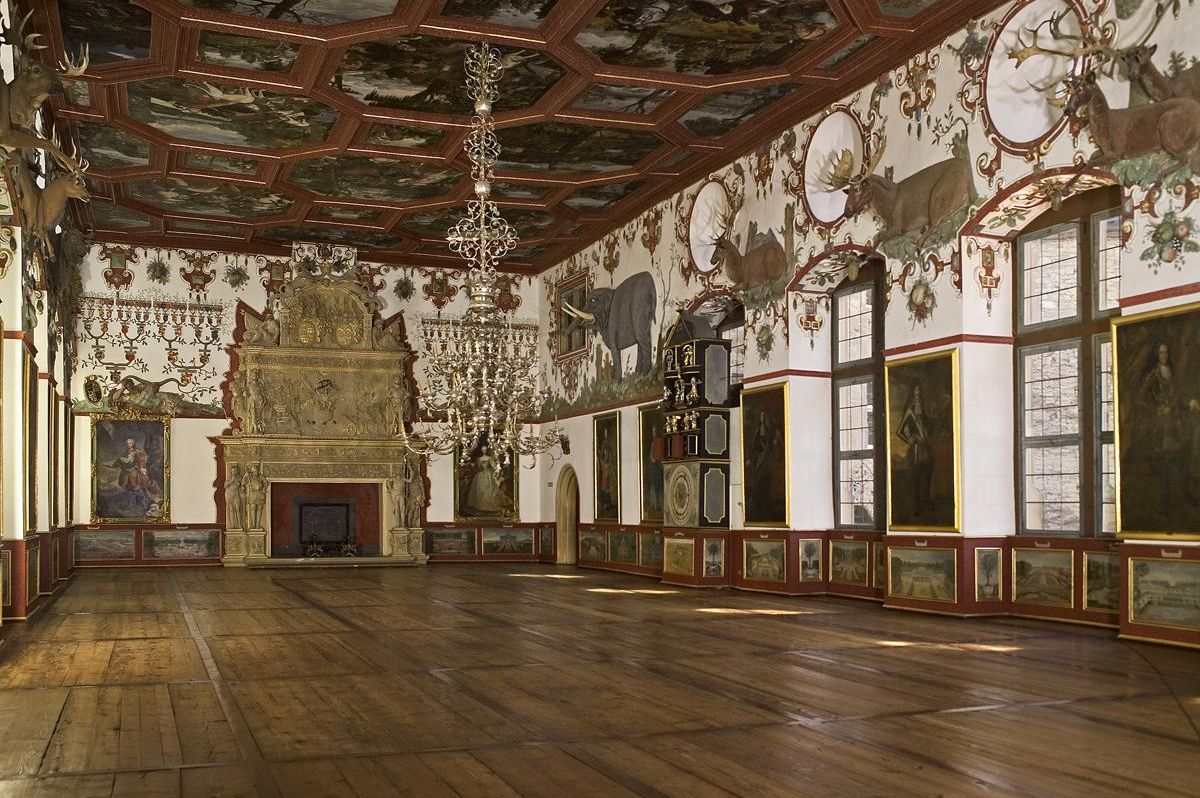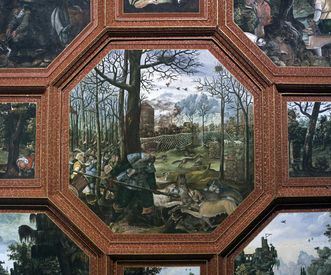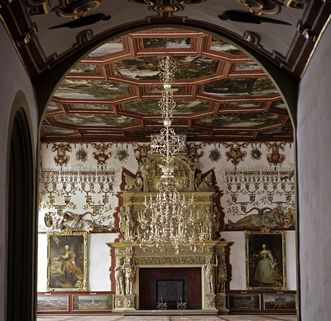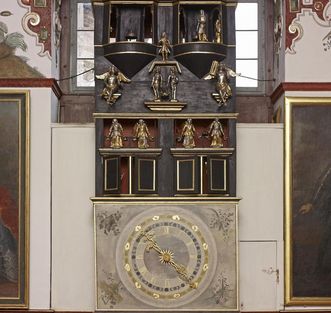Love of hunting and secret worlds
The first thing you will notice in the lavishly furnished Knights' Hall are the large animal figures on the walls. These life-like three-dimensional painted stuccos depict wildlife that can be hunted – not just from Hohenlohe. They are matched by the images on the ceiling painted between 1601-1602 by Balthasar Katzenberger of Würzburg. Each frame depicts a hunting scene. Many of the images contain secret plays on Count Wolfgang II's passion for alchemy, an earlier form of the natural sciences.






